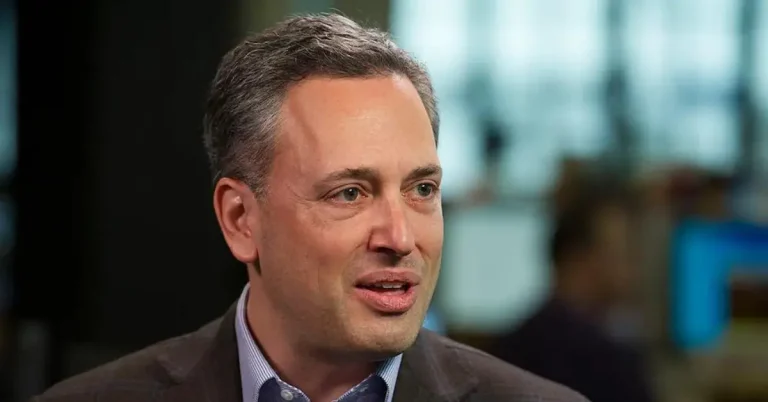What Every Company Should Know About Streamlining Hiring Processes

Key Takeaways
- Implementing structured interviews and assessments can improve hiring accuracy and reduce bias.
- Leveraging technology, such as applicant tracking systems (ATS), automates administrative tasks and enhances efficiency.
- Clear and concise job descriptions attract suitable candidates and expedite the hiring process.
- Continuous evaluation and refinement of recruitment strategies ensure ongoing improvement and adaptability.
In today’s ever-evolving employment landscape, organizations are recognizing more than ever that having an efficient and effective recruitment process is not just beneficial—it’s crucial for staying competitive and consistently attracting top-tier talent. As candidates’ expectations change and competition for high performers intensifies, companies must adapt by refining their hiring approach. Streamlining the recruitment process not only saves time and reduces administrative overhead but also provides candidates with a smoother and more positive experience. This, in turn, leads to better-quality hires who are more engaged from day one and are statistically more likely to remain with the organization long-term. One of the most potent allies in this transformative journey is the use of an ATS app, which automates many repetitive, manual tasks and empowers hiring teams to focus their efforts on making strategic, high-impact decisions rather than getting bogged down in administrative tedium.
Establishing an efficient hiring process is about more than just putting a few steps in place—it’s about developing a clear structure supported by the correct set of technologies. While it may seem tempting to rely on gut feelings or ad-hoc methods, adopting a systematic, candidate-centric process dramatically increases hiring precision and reduces common pitfalls, such as unconscious bias, process inefficiency, and a poor candidate experience. This comprehensive article provides actionable strategies for streamlining recruitment, enabling your organization to attract, evaluate, and secure high-caliber candidates reliably, regardless of market conditions or changing industry dynamics.
Implement Structured Interviews and Assessments
One of the most commonly overlooked mistakes in organizational recruitment processes is a lack of consistency and standardization in evaluating candidates. Unstructured interviews may seem flexible or conversational, but they often introduce a high degree of subjectivity, which can inadvertently result in bias or missed opportunities to accurately assess candidates’ potential. In contrast, structured interviews—where each candidate is asked the same predetermined set of questions—level the playing field by ensuring that everyone is assessed on the same criteria. This allows employers to make well-founded comparisons, systematically record results, and defend hiring decisions if ever needed.
Beyond the interview itself, robust assessment tools are vital for quantifying the actual skills and capabilities required for the job. These tools can include technical skills tests, cognitive ability assessments, and even psychometric evaluations that measure aspects such as problem-solving, communication, and teamwork. By integrating reliable, standardized assessments into your process, you not only supplement interview findings with objective, real-world data but also reduce the likelihood of a poor hire. Candidates who clearly demonstrate both the skills and the mindset required for your organization will be well-positioned for long-term success, making your recruitment efforts far more fruitful.
Best Practices for Structured Assessments
- Develop a question bank designed to evaluate the job’s core requirements and key competencies.
- Utilize scoring rubrics to ensure objective and fair evaluation of candidates’ responses.
- Incorporate a balance of behavioral and situational questions, uncovering both technical expertise and soft skills.
- Regularly review and update your assessment materials so they align with evolving job demands and industry trends.
Leverage Technology in Recruitment
The digital transformation in human resources has brought a wealth of innovative tools designed to help companies hire more effectively and efficiently. At the core of this revolution is the ATS, or applicant tracking system, which integrates everything from resume screening to candidate communications, interview scheduling, and progress tracking into a single streamlined system. According to TechTarget, an applicant tracking system serves as a centralized platform that automates and manages key aspects of the recruitment process, enabling HR teams to make more informed and efficient hiring decisions. With much of the administrative workload automated by an ATS, HR professionals regain valuable time, enabling them to focus on the human aspects of hiring, such as building candidate relationships and strategic workforce planning.
In addition to core ATS features, the latest recruitment technology now leverages artificial intelligence to source and review hundreds—if not thousands—of applicants in significantly less time than a traditional team could manage. AI-powered solutions can quickly identify patterns and signals that predict high-potential candidates, often resulting in stronger and more diverse shortlists. Video interview platforms and online reference checking solutions also help speed up decision-making and keep candidates engaged. However, organizations must remain vigilant about periodically auditing these technologies for algorithmic bias, making sure that data-driven hiring remains equitable and just. For further insights into how leading organizations deploy tech for better hiring, consult this comprehensive guide to HR technology in hiring.
Selecting the Right Technology
- Select platforms that seamlessly integrate with your current HRIS and workflow tools to prevent data silos and redundancy.
- Seek systems that offer customizable automation workflows tailored to your specific recruitment steps and policies.
- Ensure the software interface is user-friendly, so onboarding your team doesn’t become a bottleneck.
- Evaluate each solution for robust data privacy protections and compliance with local and global hiring regulations.
Craft Clear and Concise Job Descriptions
Any successful recruitment campaign starts with a well-crafted job description—your first impression on potential applicants. Poorly written or generic job postings often attract a wide swath of unqualified applicants, overwhelming your pipeline and deterring skilled professionals who desire clarity about expectations. Compelling job descriptions don’t just state a role’s day-to-day responsibilities; they provide insight into what it means to succeed in the position, outlining the exact skills, qualifications, and behaviors necessary. Avoiding unnecessary jargon and ambiguous language ensures your message is accessible and signals a thoughtful, intentional culture.
Furthermore, your job description is an opportunity to showcase what sets your company apart from others. Beyond listing tasks, take time to articulate your organization’s mission, values, and work environment. Mention career growth opportunities, flexible work options, diversity and inclusion efforts, and unique benefits that signal a strong employer brand. This level of clarity attracts candidates who not only possess the needed experience but also align philosophically with your team, making the hiring process a mutually beneficial exchange.
Tips for Writing Effective Job Descriptions
- Begin with a compelling, specific job title and a summary that encapsulates the primary objective of the role.
- Use organized bullet points to clearly lay out responsibilities, key deliverables, and minimum/desired qualifications.
- Add a section describing your company’s culture, mission, and employee benefits to highlight your value proposition.
- Provide transparency regarding reporting structures, opportunities for advancement, and work modality (in-office, remote, or hybrid).
- Adopt inclusive language throughout the posting to encourage a diverse pool of applications.
Continuously Evaluate and Refine Recruitment Strategies
The hiring landscape isn’t stagnant—what proves effective today could falter tomorrow as market conditions, technology, and candidate behaviors evolve. Staying ahead requires ongoing evaluation and refinement of your hiring approach using both quantitative data and qualitative insights. Key recruitment metrics—such as time-to-hire, cost-per-hire, offer acceptance rates, and feedback from both candidates and managers—offer concrete evidence of process strengths and gaps. Regular pulse surveys, in-depth debriefs, and new-hire check-ins also provide valuable context that goes beyond the numbers.
Actual continuous improvement means making adjustments based not only on successes and failures but also on anticipated trends and innovation. Engage with your new hires to gather meaningful feedback about their journey from application to onboarding; ask hiring managers about the hurdles they encountered or the tools that made their job easier. Commit to professional development and keep current with leading practices by reading reputable HR publications and participating in industry events. This iterative loop of action, assessment, and adaptation will keep your process resilient and effective, no matter the hiring climate.
Staying Ahead of the Curve
- Dedicate time to researching and analyzing emerging recruitment trends, best practices, and new technologies via reliable industry sources.
- Encourage and support ongoing training and certification for recruitment and HR professionals within your organization.
- Experiment with innovative sourcing channels and platforms to expand your reach to both passive and active candidates.
- Leverage partnerships with trusted HR thought-leaders, software vendors, and learning communities to maintain a competitive edge.
Streamlining your hiring process isn’t just about speeding things up—it’s a forward-looking investment in your entire organization. By embracing structured evaluations, implementing the right technologies, communicating your value proposition through clear job descriptions, and constantly evolving based on data and real-world feedback, your company will position itself to attract, engage, and successfully hire the best possible talent available.






